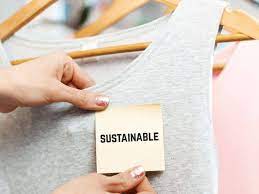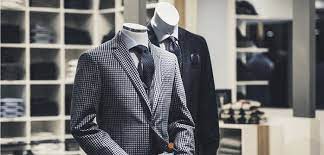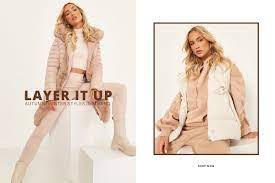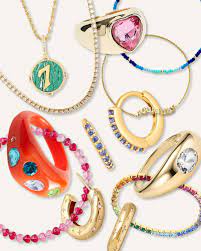Ethical Fashion Practices: Paving the Way Towards Sustainability and Social Responsibility
Ethical Fashion Practices: Making a Positive Impact
In recent years, the fashion industry has faced growing scrutiny for its environmental impact and exploitative labor practices. As consumers become more aware of these issues, there has been a rising demand for ethical fashion practices that prioritize sustainability, fair trade, and social responsibility. In response, many brands are now embracing a more conscious approach to fashion production.
One key aspect of ethical fashion is sustainability. This involves reducing the industry’s carbon footprint by implementing eco-friendly materials and production processes. Sustainable fashion brands prioritize using organic or recycled materials, such as organic cotton or recycled polyester, to minimize the negative impact on the environment. Additionally, they strive to reduce waste by focusing on quality over quantity and promoting longevity in their designs.
Another crucial element of ethical fashion is fair trade. This means ensuring that workers involved in the production process are paid fair wages and provided with safe working conditions. Ethical brands prioritize transparency and accountability throughout their supply chains, working closely with suppliers to ensure fair treatment of workers at every stage.
Furthermore, ethical fashion practices also extend to animal welfare. Many brands have adopted cruelty-free policies by avoiding the use of fur, exotic skins, or any materials obtained through animal exploitation. Instead, they opt for innovative alternatives like faux leather or plant-based fabrics that offer similar aesthetics without causing harm to animals.
The rise of ethical fashion has also given birth to a movement known as slow fashion. This concept encourages consumers to shift away from fast-paced trends and disposable clothing towards investing in timeless pieces that are made to last. Slow fashion promotes mindful consumption by encouraging consumers to consider the environmental impact and social implications of their purchasing decisions.
As consumers, we have the power to make a difference through our choices. By supporting brands that embrace ethical fashion practices, we can contribute positively towards a more sustainable and socially responsible industry. Here are some steps we can take:
- Educate ourselves: Learn about different ethical fashion practices and the impact of the fashion industry on the environment and workers’ rights. Stay informed about brands that prioritize sustainability, fair trade, and animal welfare.
- Choose wisely: Look for certifications such as Fair Trade, Global Organic Textile Standard (GOTS), or the Ethical Trading Initiative (ETI). These labels provide assurance that the brand follows ethical practices.
- Support local and independent brands: Many small-scale designers and artisans prioritize ethical production methods. By supporting them, we contribute to a more sustainable fashion ecosystem.
- Embrace second-hand shopping: Thrift stores, vintage shops, and online platforms for pre-loved clothing offer a great opportunity to reduce waste and give new life to pre-existing garments.
- Extend the lifecycle of your clothes: Take care of your clothing by following proper care instructions, repairing items when needed, or upcycling them into something new.
- Spread awareness: Share your knowledge with friends and family to inspire others to make conscious choices when it comes to fashion.
Ethical fashion practices are not just a trend; they are a necessity in creating a better future for our planet and its inhabitants. By supporting brands that prioritize sustainability, fair trade, and social responsibility, we can collectively shape a more ethical fashion industry that benefits both people and the planet. Let’s make mindful choices today for a brighter tomorrow.
7 tips about ethical fashion practices
- Research the brands you buy from to make sure they have ethical practices in place.
- Buy clothes made from natural fibres such as cotton, linen or wool instead of synthetic materials like polyester and nylon.
- Look for labels that guarantee fair wages and safe working conditions for workers in the supply chain.
- Recycle or donate old clothes rather than throwing them away when you no longer need them.
- Choose items with minimal packaging, which reduces waste and energy use during production and transportation processes.
- Buy second-hand clothing where possible to reduce demand for new garments and help extend the life of existing items already in circulation
- Support charities that are working towards improving labour standards within the fashion industry by donating or volunteering your time if possible
Research the brands you buy from to make sure they have ethical practices in place.
Research the Brands You Buy From: A Step Towards Ethical Fashion
In today’s world, where fashion choices are abundant, it’s essential to be conscious of the brands we support. By taking a moment to research the brands we buy from, we can ensure that our purchases align with our values and contribute to ethical fashion practices.
One of the most effective ways to promote ethical fashion is by supporting brands that prioritize sustainability, fair trade, and social responsibility. However, this requires a little effort on our part as consumers. Before making a purchase, it’s worth taking the time to investigate the brand’s practices and values.
Start by visiting the brand’s website and looking for information on their commitment to ethical fashion. Many responsible brands proudly display their sustainability initiatives, fair trade partnerships, or certifications they have obtained. Look out for labels such as Fair Trade, Global Organic Textile Standard (GOTS), or Ethical Trading Initiative (ETI), which provide assurance that the brand follows ethical practices.
Beyond their website, explore other sources of information such as independent reviews or articles about the brand. Social media platforms can also be insightful as they often provide a glimpse into a brand’s transparency and engagement with ethical issues.
When researching a brand’s ethical practices, consider key aspects such as:
- Sustainable Materials: Does the brand use eco-friendly materials like organic cotton or recycled fabrics? Are they transparent about their manufacturing processes and environmental impact?
- Fair Trade and Labor Conditions: Does the brand ensure fair wages and safe working conditions for its workers? Do they have policies in place to protect workers’ rights throughout their supply chain?
- Animal Welfare: Does the brand use animal-derived materials? Are they committed to cruelty-free alternatives?
By conducting this research, we empower ourselves to make informed decisions about where we invest our money. Supporting brands that align with our values not only promotes ethical fashion but also sends a message to other companies that consumers prioritize sustainability and social responsibility.
Remember, every purchase we make is a vote for the kind of world we want to live in. By researching the brands we buy from, we can contribute to a more ethical fashion industry that values people, animals, and the environment. Let’s be mindful consumers and use our purchasing power to drive positive change.
Buy clothes made from natural fibres such as cotton, linen or wool instead of synthetic materials like polyester and nylon.
Choosing Natural Fibres: A Step Towards Ethical Fashion
When it comes to making ethical choices in fashion, one simple yet impactful step is to opt for clothes made from natural fibres like cotton, linen, or wool instead of synthetic materials such as polyester and nylon. This conscious decision not only benefits the environment but also supports sustainable practices and promotes a more ethical fashion industry.
Natural fibres have been used in clothing for centuries due to their numerous advantages. Cotton, for example, is a widely popular natural fibre known for its breathability and comfort. It is also biodegradable, meaning it breaks down naturally over time, reducing its impact on landfill waste. By choosing clothing made from organic cotton, you can further support sustainable farming practices that avoid harmful pesticides and chemicals.
Linen is another fantastic natural fibre with eco-friendly qualities. Made from the flax plant, linen requires fewer resources like water and energy during production compared to synthetic materials. Its durability ensures that linen garments can be enjoyed for years, reducing the need for frequent replacements.
Wool, derived from sheep or other animals like alpacas or cashmere goats, is a versatile natural fibre with excellent insulation properties. Wool garments are known for their warmth and breathability while being biodegradable as well. Supporting brands that prioritize ethical treatment of animals in their wool production ensures both environmental sustainability and animal welfare.
On the other hand, synthetic materials like polyester and nylon are derived from petroleum-based products through energy-intensive processes. These materials do not break down easily and contribute significantly to microplastic pollution in our oceans when washed. By choosing natural fibres instead of synthetics, we can reduce our reliance on fossil fuels and minimize our contribution to plastic pollution.
When shopping for clothes made from natural fibres, it’s essential to look out for certifications such as Global Organic Textile Standard (GOTS) or Oeko-Tex Standard 100. These labels provide assurance that the garments have been produced using environmentally friendly processes and meet strict criteria for social responsibility.
By consciously opting for clothes made from natural fibres, we can support sustainable farming practices, reduce our environmental footprint, and contribute to a more ethical fashion industry. Every small choice we make as consumers has the power to drive positive change. Together, let’s embrace natural fibres and take a step towards a more sustainable and responsible fashion future.
Look for labels that guarantee fair wages and safe working conditions for workers in the supply chain.
Look for Labels: Ensuring Fair Wages and Safe Working Conditions in Fashion
When it comes to ethical fashion practices, one important tip is to look for labels that guarantee fair wages and safe working conditions for workers in the supply chain. By supporting brands that prioritize these aspects, we can contribute to a more equitable and sustainable fashion industry.
In many parts of the world, garment workers face challenging conditions, often working long hours for low wages in unsafe environments. This exploitation is not only morally wrong but also perpetuates a cycle of poverty and inequality. By choosing brands that prioritize fair wages and safe working conditions, we can help break this cycle and support the well-being of those who make our clothes.
When shopping for new clothing items, take a moment to look for certifications or labels that indicate a commitment to fair trade or worker welfare. Some examples include Fairtrade International, Ethical Trading Initiative (ETI), or Global Organic Textile Standard (GOTS). These labels provide assurance that the brand has undergone rigorous assessments to ensure fair treatment of workers throughout their supply chain.
Supporting brands with these certifications not only ensures that workers are paid decent wages but also helps create safer working environments. It means supporting initiatives that provide training on health and safety practices, promote gender equality, and prohibit child labor. By choosing such brands, we send a powerful message to the industry that we value the rights and well-being of those involved in creating our clothes.
It’s important to note that while looking for labels is a great starting point, it’s also essential to consider transparency in supply chains. Brands should be open about their sourcing practices and share information about their suppliers’ working conditions. This transparency allows consumers to make informed choices based on reliable information.
By actively seeking out brands with labels guaranteeing fair wages and safe working conditions, we can make a positive impact on the lives of garment workers worldwide. Our choices as consumers have the power to drive change and encourage the fashion industry to prioritize the rights and well-being of its workers. Let’s support brands that share our values and contribute to a more ethical and sustainable future for fashion.
Recycle or donate old clothes rather than throwing them away when you no longer need them.
Recycle or Donate: Giving New Life to Old Clothes
In a world where fashion trends change rapidly, it’s easy to accumulate a surplus of clothing. But what happens when these once-loved items no longer serve a purpose in our wardrobes? Instead of simply discarding them, we can make a positive impact by recycling or donating our old clothes.
Recycling old clothes is an excellent way to reduce waste and lessen the burden on our planet. Fabrics like cotton, polyester, and wool can be recycled into new materials, reducing the need for virgin resources. Many communities have textile recycling programs or drop-off points where you can responsibly dispose of your unwanted garments. By recycling, we contribute to a circular economy where materials are reused rather than ending up in landfills.
Another option is to donate our gently used clothes to those in need. Many charitable organizations accept clothing donations and distribute them to individuals or families facing financial hardship. By giving our old clothes a second life, we help reduce the demand for new clothing production and extend the lifecycle of these garments.
When donating clothes, it’s essential to ensure they are clean and in good condition. This ensures that they can be used immediately by those who receive them. Additionally, consider donating to organizations that align with your values and support causes you care about. Some charities focus on supporting specific communities or addressing social issues such as homelessness or unemployment.
Donating or recycling old clothes not only benefits the environment but also contributes to social welfare. It allows us to be mindful consumers who actively participate in creating positive change within the fashion industry.
If you’re unsure where to start, here are some steps you can take:
- Sort through your wardrobe: Take some time to assess which items you no longer wear or need.
- Separate recyclable items: Identify fabrics that can be recycled and find local textile recycling programs or drop-off points.
- Prepare donations: Wash and fold clothes that are in good condition and suitable for donation.
- Research charitable organizations: Look for local charities or nonprofits that accept clothing donations and support causes you believe in.
- Drop-off or arrange a collection: Visit the designated drop-off locations or contact the organization to inquire about collection services.
- Spread the word: Encourage friends, family, and colleagues to recycle or donate their old clothes as well.
By recycling or donating our old clothes, we contribute to a more sustainable fashion industry while making a positive impact on the lives of others. Let’s embrace this ethical fashion practice and give new life to our once-loved garments. Together, we can create a more mindful and compassionate approach to fashion consumption.
Choose items with minimal packaging, which reduces waste and energy use during production and transportation processes.
Choose Minimal Packaging: A Sustainable Step in Ethical Fashion
When it comes to ethical fashion practices, every small step counts towards creating a more sustainable and responsible industry. One such step is choosing items with minimal packaging. While it may seem like a simple decision, opting for products with less packaging can have a significant positive impact on the environment.
Minimal packaging reduces waste and energy use throughout the production and transportation processes. Excessive packaging not only contributes to landfill waste but also requires additional resources such as water, energy, and raw materials for its production. By choosing items with minimal packaging, we can help reduce the environmental footprint associated with the fashion industry.
In addition to reducing waste, minimal packaging also minimizes energy consumption during transportation. Less bulky packaging means lighter shipments, which require less fuel for transportation. This helps lower carbon emissions and reduce the overall impact on our planet.
So how can we incorporate this tip into our ethical fashion practices? Here are a few suggestions:
- Look for brands that prioritize minimal packaging: Many ethical fashion brands are conscious of their environmental impact and strive to minimize packaging waste. Seek out these brands when making your purchasing decisions.
- Choose products with eco-friendly packaging: Some brands go the extra mile by using sustainable materials for their packaging, such as recycled or biodegradable materials. Supporting these brands encourages others to follow suit.
- Avoid excessive wrapping or unnecessary extras: When purchasing online or in-store, consider whether you really need additional layers of wrapping or unnecessary extras like tissue paper or plastic bags. Opting out of these options reduces waste without compromising your purchase.
- Support local and independent designers: Small-scale designers often have more control over their production processes and may be able to offer products with minimal or eco-friendly packaging options.
By consciously choosing items with minimal packaging, we contribute to reducing waste and conserving valuable resources in the fashion industry. This small act aligns with our commitment to ethical fashion practices and supports a more sustainable future.
Remember, every decision we make as consumers has an impact. Let’s embrace minimal packaging as part of our ethical fashion journey and inspire others to do the same. Together, we can make a difference in creating a more sustainable and responsible fashion industry.
Buy second-hand clothing where possible to reduce demand for new garments and help extend the life of existing items already in circulation
Extend the Life of Fashion: Embrace Second-Hand Shopping
In a world where trends change at lightning speed, it’s easy to get caught up in the cycle of buying new clothes. However, one simple yet powerful way to contribute to ethical fashion practices is by embracing second-hand shopping. Not only does this reduce the demand for new garments, but it also helps extend the life of existing items already in circulation.
When we buy second-hand clothing, we give these pre-loved pieces a new lease on life. Instead of contributing to the production of new garments and the associated environmental impact, we choose to make use of what already exists. This act alone can significantly reduce our carbon footprint and conserve valuable resources.
Second-hand shopping offers a treasure trove of unique finds and hidden gems. Thrift stores, vintage shops, and online platforms dedicated to pre-loved fashion provide an opportunity for us to explore diverse styles while being mindful of sustainability. From classic vintage pieces to trendy modern styles, there is something for everyone.
By purchasing second-hand clothing, we also support a circular economy. Rather than discarding clothes after a few wears or when trends change, we pass them on for others to enjoy. This helps reduce textile waste and minimizes the amount of clothing ending up in landfills.
Moreover, second-hand shopping allows us to express our individuality and personal style. With an array of options available, we can curate a wardrobe that reflects our unique taste without compromising on ethics or breaking the bank.
To make the most out of second-hand shopping:
- Explore local thrift stores or vintage boutiques: These hidden gems often hold surprises waiting to be discovered.
- Check out online platforms: Websites and apps dedicated to buying and selling pre-loved fashion offer convenience and a vast selection.
- Attend clothing swaps or organize one with friends: Swapping clothes allows you to refresh your wardrobe without spending any money.
- Embrace DIY and upcycling: Get creative by altering or repurposing second-hand clothes to give them a fresh new look.
Remember, every time we choose to buy second-hand, we contribute to a more sustainable fashion industry. By reducing the demand for new garments and extending the life of existing items, we play an active role in creating a more ethical and environmentally conscious world.
So, let’s embark on this exciting journey of second-hand shopping and embrace the joy of finding unique pieces while making a positive impact. Together, we can redefine fashion by giving it a timeless and sustainable twist.
Support charities that are working towards improving labour standards within the fashion industry by donating or volunteering your time if possible
Supporting Charities: A Key Step in Ethical Fashion Practices
When it comes to promoting ethical fashion practices, supporting charities that work towards improving labour standards within the fashion industry is a significant step we can take. These organizations play a crucial role in advocating for fair wages, safe working conditions, and the overall well-being of workers involved in fashion production. By donating or volunteering our time, we can contribute to their efforts and make a positive impact.
Charities focused on improving labour standards within the fashion industry often work tirelessly to raise awareness about the challenges faced by garment workers and push for systemic change. They collaborate with brands, governments, and other stakeholders to ensure that workers are treated fairly and their rights are protected.
Donating to these charities provides them with the necessary resources to continue their essential work. Financial contributions help fund campaigns, research initiatives, educational programs, and support services for workers. Even small donations can make a difference when combined with others who share the same commitment to ethical fashion practices.
In addition to monetary support, volunteering your time can be equally valuable. Many charities welcome volunteers who can contribute their skills and expertise in areas such as research, advocacy, event organization, or fundraising. By offering your time and energy, you become an active participant in driving positive change within the fashion industry.
Furthermore, supporting these charities sends a powerful message to brands and policymakers that consumers demand fair treatment of workers throughout the fashion supply chain. It adds weight to the collective voice calling for accountability and transparency in labour practices.
Here are some ways you can support charities working towards improving labour standards within the fashion industry:
- Research: Identify reputable charities that align with your values and have a track record of making an impact in this field.
- Donate: Contribute financially according to your means. Even small recurring donations can have a significant cumulative effect.
- Volunteer: Offer your skills or time if possible. Reach out to charities directly to inquire about volunteer opportunities.
- Spread the word: Share information about these charities and their initiatives with your friends, family, and social networks. Raise awareness about the importance of fair labour standards in the fashion industry.
Remember, supporting these charities is not only an act of kindness but also a way to actively participate in shaping a more ethical and sustainable fashion industry. Together, we can make a difference by promoting fair treatment and improved working conditions for those who contribute to the clothes we wear.









